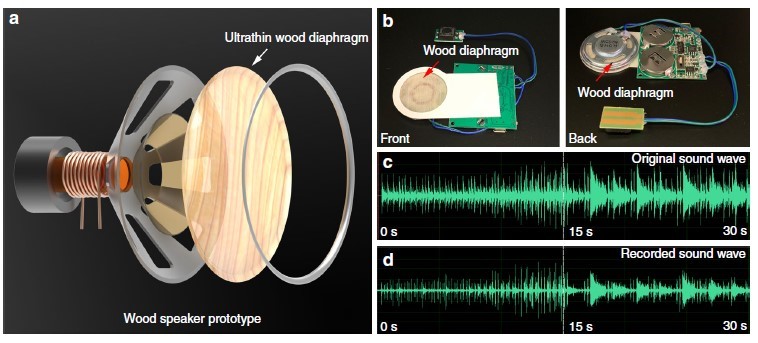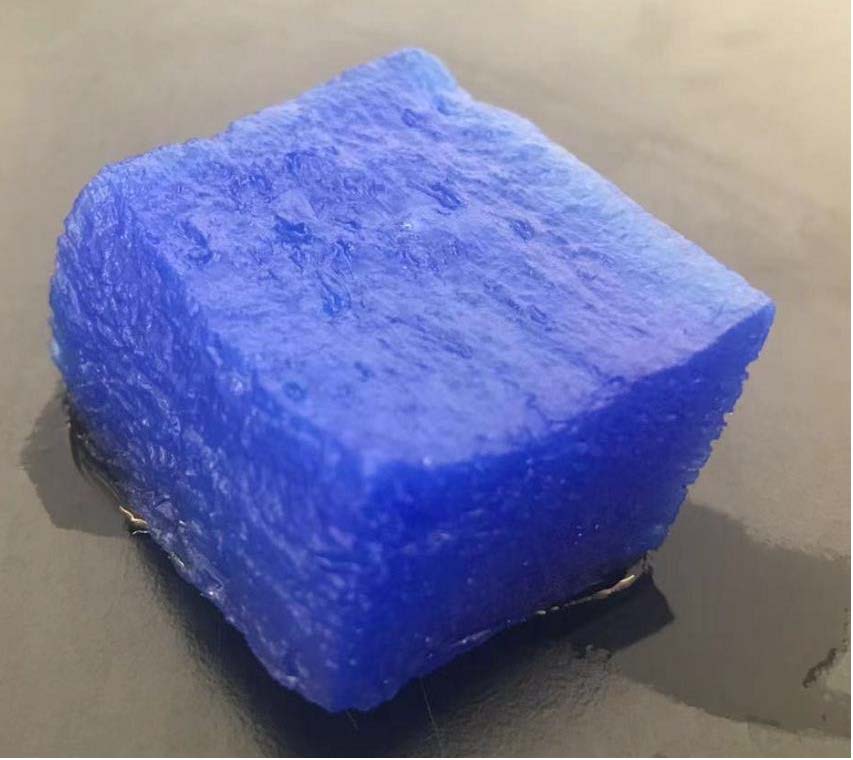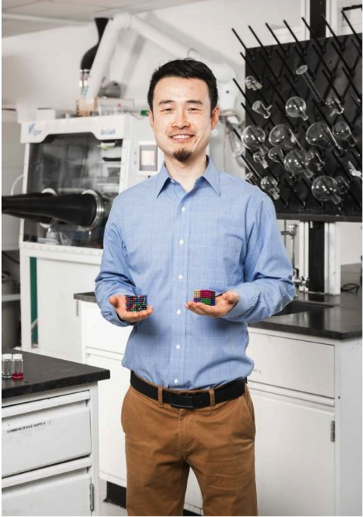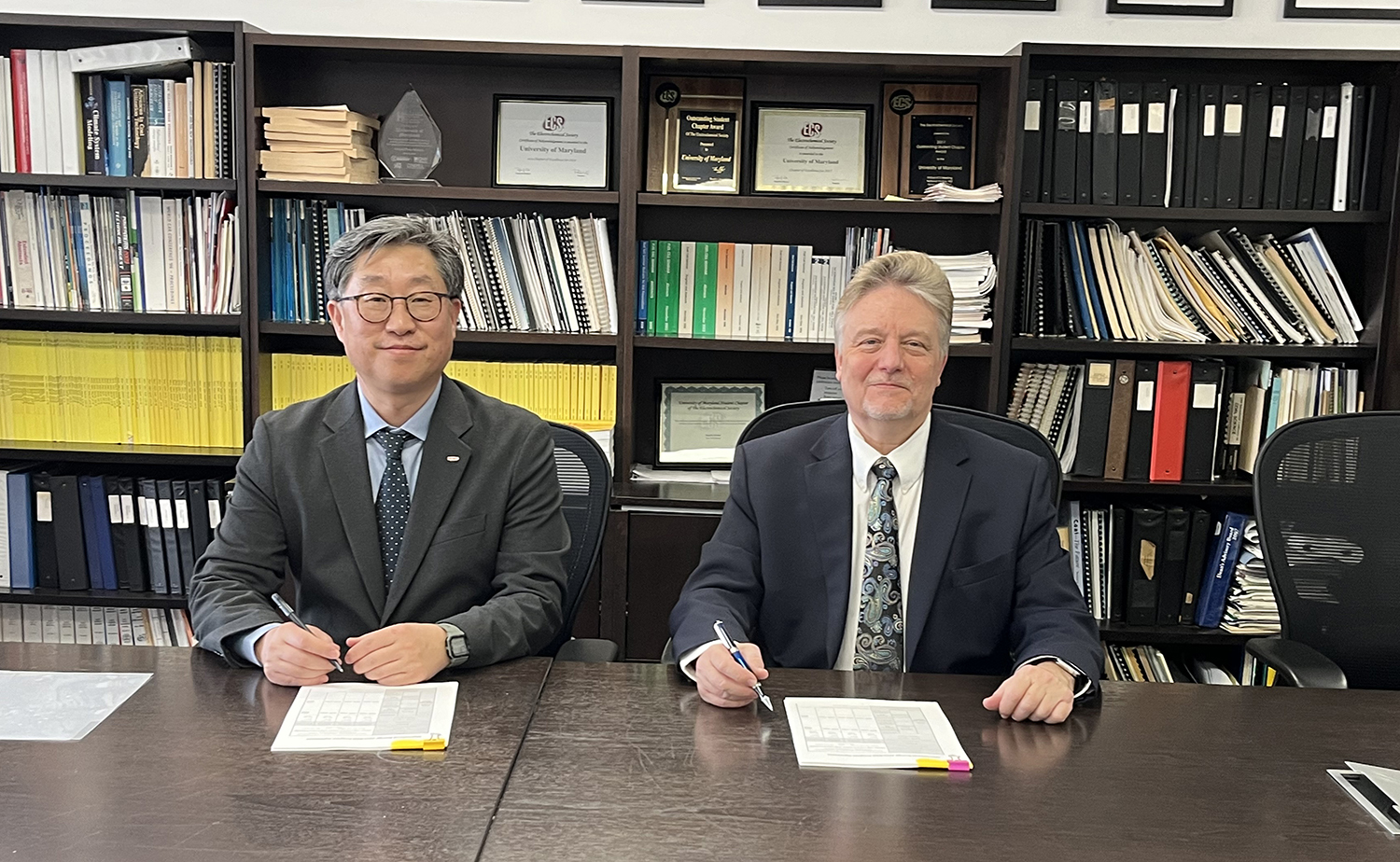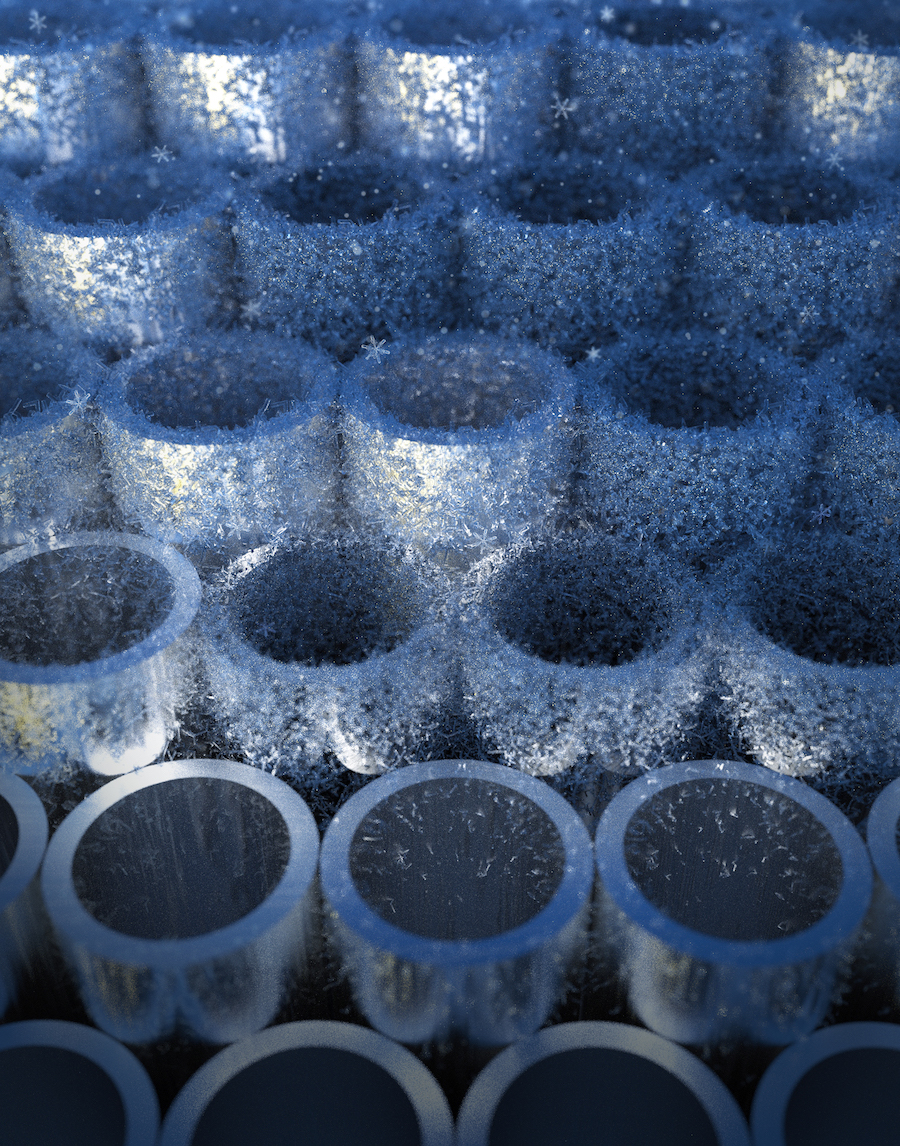News Story
Wood-based Technology Creates Electricity from Heat
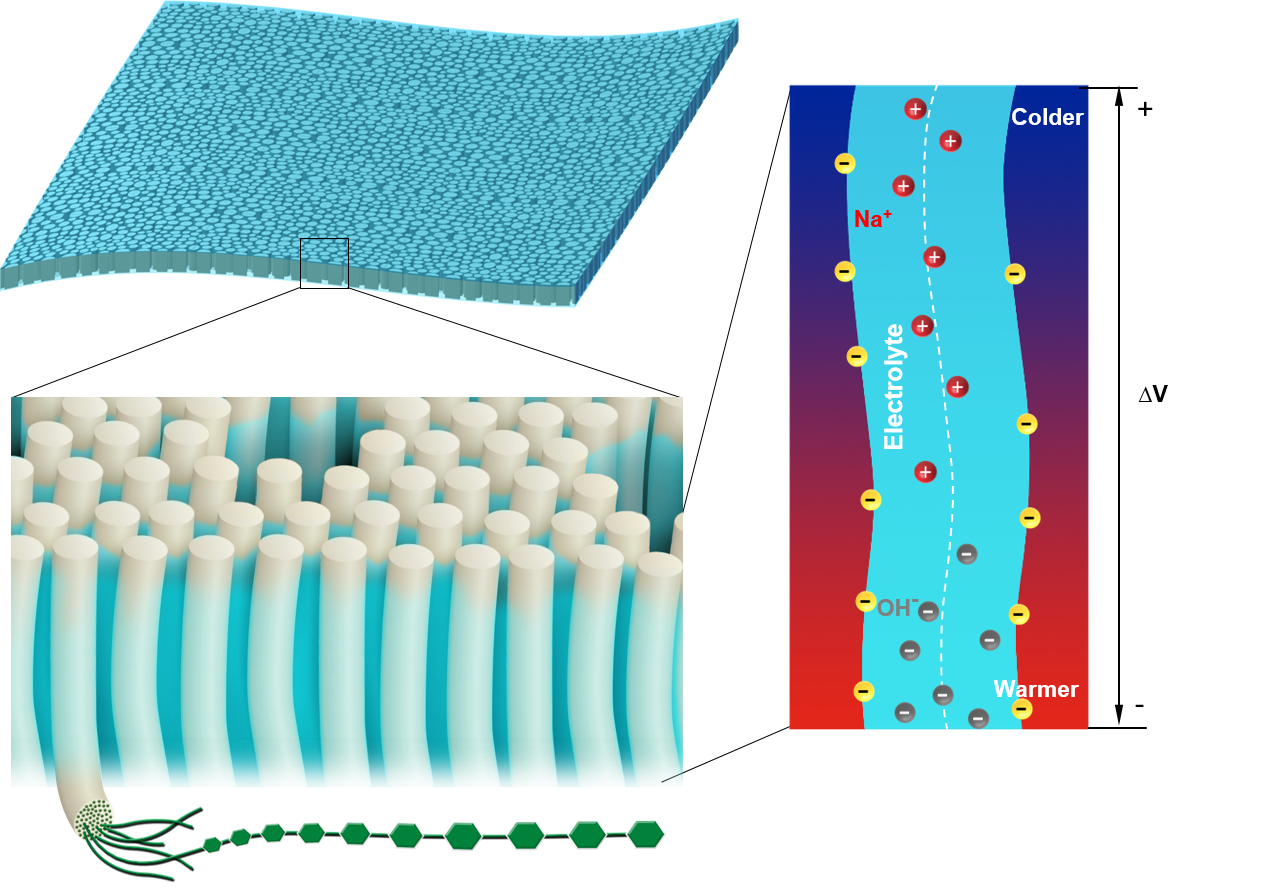
Researchers at the University of Maryland have created a heat-to-electricity device that runs on ions that could someday harness the body’s heat to provide energy.
Liangbing Hu and Robert Briber – both professors in the UMD Department of Materials Science and Engineering (MSE) - and Siddhartha Das of the UMD Department of Mechanical Engineering (ME), transformed a piece of wood into a flexible membrane that generates energy from the same type of electric current (ions) that the human body runs on. This energy is generated using charged channel walls, and other unique properties of the wood’s natural nanostructures. With this new wood-based technology, they can use a small temperature differential to efficiently generate ionic voltage, as demonstrated in a paper published March 25 in Nature Materials.
Generating charge between two different temperatures is easy – take lightning storms, for example. For small temperature differences, however, generating charge is usually more difficult.
According to Dr. Hu, the team has “demonstrated their proof-of-concept device to harvest low-grade heat using nanoionic behavior of processed wood nanostructures.”
Trees grow channels, like human veins, that move water between the roots and the leaves. These are made up of fractally-smaller channels, and at the level of a single cell, the channels are only nanometers across. The team harnessed these channels to regulate ions. Then, using basswood - a fast-growing tree with low environmental impact – the team treated the wood and removed the lignin and hemicellulose, giving the remaining cellulose its signature flexibility. This process also converts the structure of the cellulose from type I to type II, which is key to enhancing ion conductivity.
A membrane, made of a thin slice of wood, was bordered by platinum electrodes with sodium-based electrolyte infiltrated into the cellulose. This regulates the ion flow inside the tiny channels, generating an electric charge.
“The charged channel walls can establish an electrical field that appears on the nanofibers and thus helps effectively regulate ion movement under a thermal gradient,” said MSE Post-Doctoral Associate, Tian Li, who served as first author of the paper.
Li said that the sodium ions in the electrolyte insert into the aligned channels, which is made possible by the crystal structure conversion of cellulose and by dissociation of the surface functional groups.
“We are the first to show that this type of membrane, with its expansive arrays of aligned cellulose, can be used as a high-performance ion selective membrane by nanofluidics and molecular streaming, and greatly extends the applications of sustainable cellulose into nanoionics,” Li summed up in the paper.
This latest work builds on extensive previous UMD research to develop novel and potentially high impact applications of modified wood.
Related Media:
UMD Researchers Create Super Wood Stronger Than Most Metals (Feb. 2018)
Wood Windows are Cooler than Glass (June 2013)
A Battery Made of Wood? (August 2016)
For additional information:
Li, Tian, et al (2019). “Cellulose ionic conductors with high differential thermal voltage for low-grade heat harvesting.” Nature Materials, DOI: 10.1038/s41563-019-0315-6.
Published April 9, 2019

